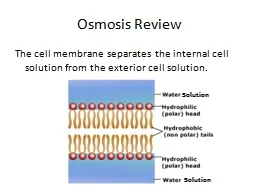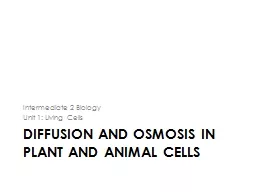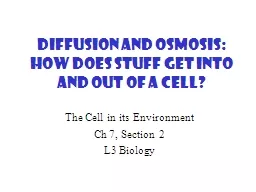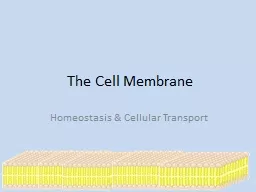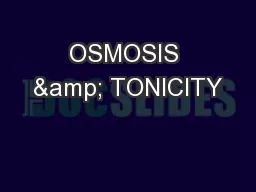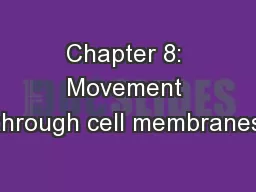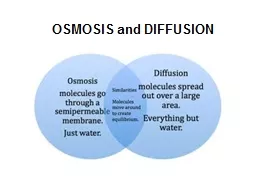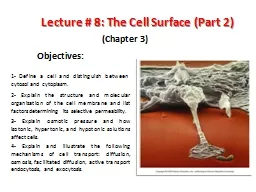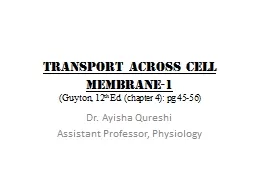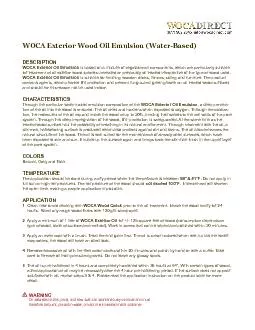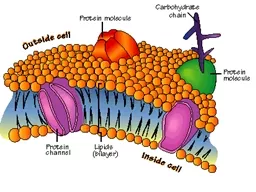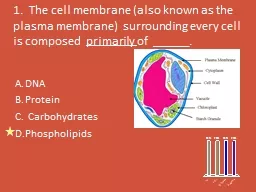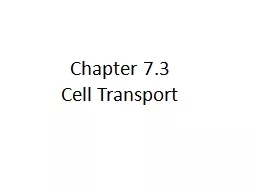PPT-Osmosis Review The cell membrane separates the internal cell solution from the exterior
Author : ellena-manuel | Published Date : 2018-11-21
Solution Solution Cell Membrane consists of the lipid bilayer carbohydrates and proteins Water can pass right through lipid bilayer What is a solution A mixture
Presentation Embed Code
Download Presentation
Download Presentation The PPT/PDF document "Osmosis Review The cell membrane separa..." is the property of its rightful owner. Permission is granted to download and print the materials on this website for personal, non-commercial use only, and to display it on your personal computer provided you do not modify the materials and that you retain all copyright notices contained in the materials. By downloading content from our website, you accept the terms of this agreement.
Osmosis Review The cell membrane separates the internal cell solution from the exterior: Transcript
Download Rules Of Document
"Osmosis Review The cell membrane separates the internal cell solution from the exterior"The content belongs to its owner. You may download and print it for personal use, without modification, and keep all copyright notices. By downloading, you agree to these terms.
Related Documents

